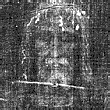Results from This Site: 91 - 100 of 228 total results for 1988 carbon dating
-
carbon-dating hit the headlines in 1988. The medical articles in the last two Newsletters provide a prime example for which I have been invited to act as referee. In the red corner we have a ten page
-
Although carbon dating of the Shroud in 1988 yielded a 14th century date, newly discovered information has led many researchers to believe the carbon date is in error. The controversy continues. In any
-
committee knowing which carbon sample was from the Shroud.40 Selection of laboratories. To avoid a potential conflict of interest, the three laboratories who conducted the 1988 dating, namely Arizona,
-
Textile Questions that Remain Following the Carbon Dating Test, in Shroud Spectrum International 28/29, 1988, pp. 13-15. VAN HAELST, Remi. Aumentano i dubbi sulla datazione radiocarbonica, in Collegamento
-
1260-1390, date resulting from 1988 C-14 test, 126, 137, 151, 159, 176 1291, introduction into Italy the use of alizarin dye, 173 1325, median date of the Shroud carbon 14 results, 173 2 J. G.
-
least two other sites ought to have been carbon dated, and make it appear younger than other evidence suggests it to such sample as was tested came from the single most con- be. taminated place
-
could have contaminated the samples used in the 1988 test and affected the dating. The physical existence of this alleged “coating,” however, has not been confirmed. Alternatively, Russian biochemist
-
composed of five-carbon sugar units. However, not all of the polysaccharides on the fibers were removed by concentrated HCl. Higher- molecular-weight starch fractions are much more difficult to hydrolyze
-
additional documentation from a In 1988, Carbon-14 findings from three previously-unpublished 1978 Shroud of Accelerator Mass Spectrometer (AMS) Turin Research Project (STURP) study that Labs independently
-
plausible explanation for the medieval result of the 1988 radiocarbon dating test. Since then, a scientific paper documenting the results of a spectroscopic analysis of Shroud material has been published
